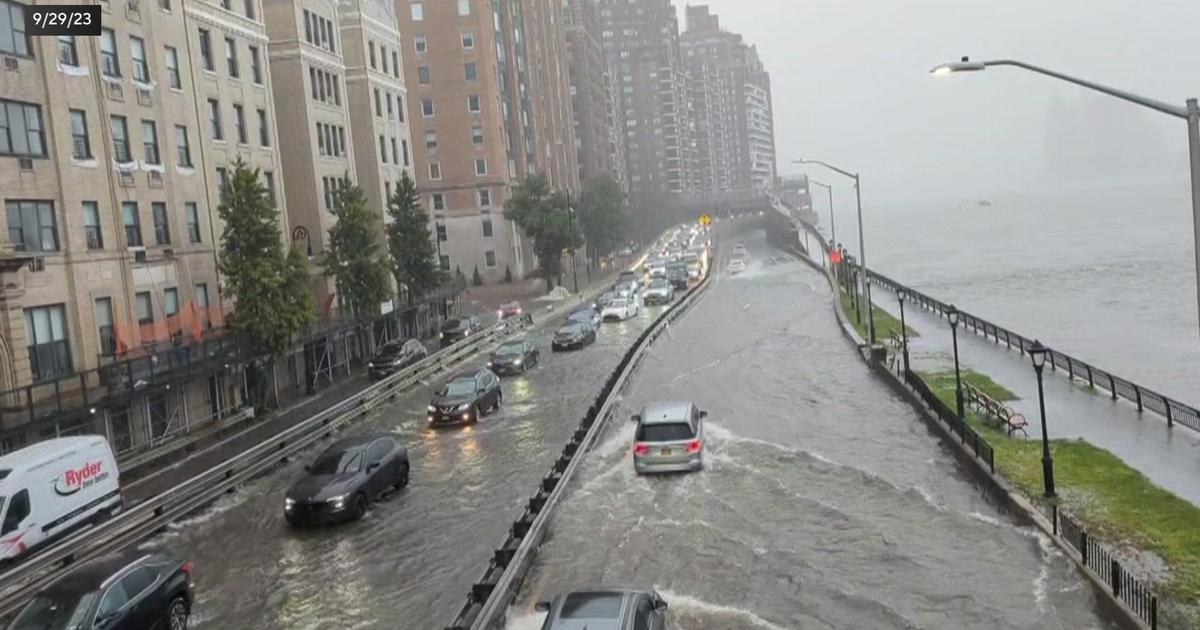Report: Despite NJ TRANSIT Hurricane Plan, Agency Sustained $100 Million In Damage
NEWARK, N.J. (CBSNewYork/AP) - New Jersey Transit had a hurricane plan to move its trains to higher ground before superstorm Sandy hit, a newspaper found, raising additional questions about why the agency instead moved locomotives and rail cars to low-lying rail yards, resulting in more than $100 million damage.
The Record newspaper had to file a lawsuit to get the transit agency to release a copy of the 3 1/2-page plan, which was prepared four months before Sandy. In response to the newspaper's initial request, NJ TRANSIT released a copy of the plan that was completely blacked out, or redacted, except for the title: NJ Transit Rail Operations Hurricane Plan.
Report: Despite NJ TRANSIT Hurricane Plan, Agency Sustained $100 Million In Damage
The plan called for moving railcars and locomotives "from flood-prone areas to higher ground'' and lists more than a half-dozen locations.
Not on the list were Kearny Yard and Hoboken, the low-lying yards where a third of the agency's fleet - 70 locomotives and 273 rail cars - was damaged by flooding from the storm.
An NJ TRANSIT spokesman declined to answer questions about why the equipment was moved to those locations.
As WCBS 880's Ginny Kosola reported, Princeton University's director of the Transportation Research Program Alain Kornhauser said it appears NJ TRANSIT prepared but failed to implement that plan because they didn't believe the threat, even though weather forecasting accuracy has increased substantially in recent years.
Nearly 10 months later, 97 of the rail cars and 17 of the locomotives are still awaiting repair, according to the agency's website.
The total cost to repair and replace the rolling stock is estimated at more than $100 million, though NJ TRANSIT has said it expects most of that will be covered by insurance.
NJ TRANSIT has been considering using rail yards in the Linden and New Brunswick areas for protection from future flooding. The agency has sought more than a half-billion dollars to safeguard its rolling stock and rail yards by building, buying or leasing temporary and permanent rail yard locations for use as emergency storage and inspection facilities and protecting existing yards system-wide against flooding.
You May Also Be Interested In These Stories
(TM and © Copyright 2013 CBS Radio Inc. and its relevant subsidiaries. CBS RADIO and EYE Logo TM and Copyright 2013 CBS Broadcasting Inc. Used under license. All Rights Reserved. This material may not be published, broadcast, rewritten, or redistributed. The Associated Press contributed to this report.)



